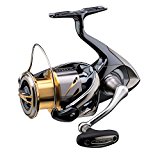Rock Bass Spring Fishing Facts and Information
Rock Bass will bite on a wide variety of baits, both natural and artificial.
Distribution & Habitat
Rock Bass are native to the slow moving rivers, streams and lakes of northeastern United States and southeastern Canada through to central Canada. They have since been introduced to the Mississippi Valley and as far north as Manitoba.
Like all bass, Rock Bass prefer habitats that offer them both protection and a means to hide in ambush to strike at their prey. The typical sunken debris of logs, boat wrecks, sunken cars all offer excellent protection for them along with rock outcrops and riverbank outcrops.
Food Preferences in Spring
Food preferences in spring do not differ all that much from summer and fall. They can easily be caught with worms but will also jump at leeches, crayfish, fathead minnows, golden shiners and gizzard shad. The only thing that really changes in the spring are the techniques. Spring is the spawning season for Rock Bass and the male Rock Bass spends several weeks building a nest, defending it and then protecting the fry. During this time, he will not actively feed but can be provoked into striking if a lure or bait is placed within his territory.
Rock Bass will bite on a wide variety of baits, both natural and artificial. Minnows, worms and small crayfish are the most productive baits.
Locations
The best locations to fish for rock bass are those that offer cover and that are close to the bottom or the river or lake bed. They are mostly bottom fish, standing about six to 12 inches off the bottom under or near cover.
Bait Casting
Bait casting is really simple with Rock Bass. Use a small 1/0 hook with a split shot. When casting, use a simple float or bobber and cast so that the bobber will suspend the bait about six inches off the bottom. Use a light bobber that will allow you to see the nibbles and strikes. Perch and sunfish often are in the company of Rock Bass and like to take the bait by nibbling at it.
For areas with a lot of weeds or debris guaranteeing snags, use a weedless hook.


